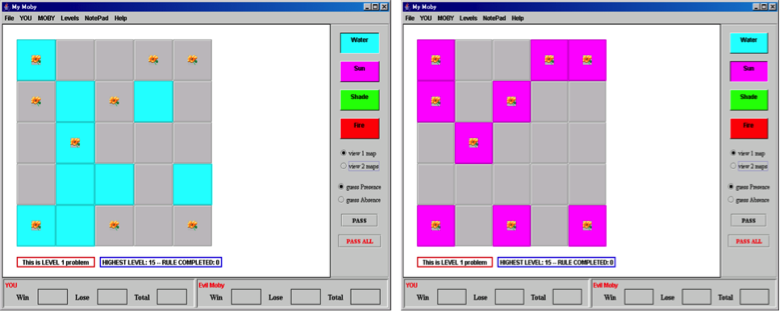STEM Builders
These projects are investigating the core foundations which build up conceptual reasoning in science, technology, engineering, and math (STEM) disciplines.
Disciplinary Ways of Thinking
When it comes to ways of thinking, science and math have lots of them. 'Ways of thinking' refers to how people connect distinct ideas to reach conclusions. A few examples include causal chaining, reasoning through hierarchies, statistical comparison, proportional reasoning, induction of general propositions from instances, analogical reasoning, and using hypothetico-deductive methods to make predictions. Many of our projects are designed to help students learn and experience the power of different ways of thinking, while simultaneously learning important STEM content. This not only helps students feel the satisfaction of a good line of thought, but it also makes them more likely to use the thinking in the future to problem solve and learn more deeply.
One major effort involves making thinking visible. People learn to reason by observing how other people reason. But, reasoning can move fast and it can be hard to follow. We have developed technologies that help reveal the steps of reasoning in readily understood formalisms. For example, Teachable Agents graphically demonstrate how they chain from one idea to the next. Children (and adults) exhibit impressive competence when inventing and using visual representations to help guide their reasoning, and once they have learned to do so, they are likely to transfer the method of reasoning.

A second major effort emphasizes helping students learn the big ideas that span many topics. For example, in middle school, reasoning about ratio and proportion runs through much of science and math. In statistics, it is a deep understanding of variability. If students can develop a powerful understanding of these big ideas, it can improve their future learning in many areas. Our inventive learning approach is unique in that we create "starter units" where students have to induce the big ideas by finding recurrent patterns. It is a very stylized form of active or constructivist learning, and it has been hugely successful. We are currently developing a guiding theory so that other educators can also create inductive learning lessons.
Relevant publications:
- Schwartz, D. L. (1993). The construction and analogical transfer of symbolic visualizations. Journal of Research in Science Teaching, 30, 1309-1325.
- Schwartz, D. L., Brophy, S., Lin, X. D., & Bransford, J. D. (1999). Software for managing complex learning: An example from an educational psychology course. Educational Technology Research and Development, 47, 39- 59.
- Chin, D. B., Dohamen, I., Oppezzo, M., Cheng, B., Chase, C., & Schwartz, D. L. (2010). Preparing Students for Future Learning with Teachable Agents. Educational Technology Research and Design, 58, 649-669.
- Dow, S. P., Glassco, A., Kass, J., Schwarz, M., Schwartz, D. L., & Klemmer, S. R. (2010). Parallel prototyping leads to better design results, more divergent creations, and self-efficacy gains. ACM Transactions on Computer-Human Interaction, 17(4).
- Martin, L. & Schwartz, D. L. (2009). Prospective adaptation in the use of representational tools. Cognition and Instruction, 27(4), 370-400.
